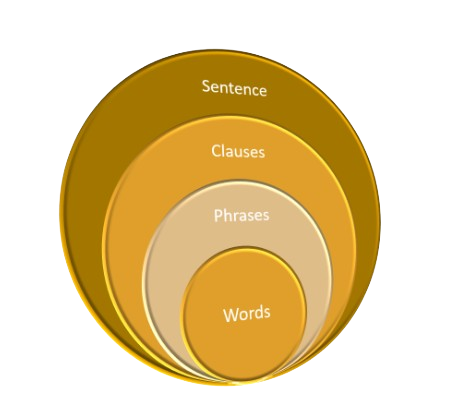Let sentences connect!
Anyone will very rarely die for a righteous man, though someone might possibly dare to die for a good man. But God demonstrates his own love for us in this: While we were still sinners, Christ died for us. -Romans 5:7~8)
After the Last Supper, Jesus was arrested by the Jewish legalists and crucified. His death holds significant meaning both religiously and historically, but a profound interpretation of it is recorded in the Book of Romans. It is hard even to die for a righteous person, yet Jesus died for us sinners.
As we have seen in several Bible passages, if the purpose of Jesus coming to Earth was to save us from sin and to grant us eternal life, then his death on the cross must be seen as the fulfillment of that purpose, though it is hard to say for sure. However, Paul, the author of Romans, wrote that through this death, we not only achieved peace with God but also joy.
“Therefore, since we have been justified through faith, we have peace with God through our Lord Jesus Christ, – Romans 5:1)
Not only is this so, but we also rejoice in God through our Lord Jesus Christ, through whom we have now received reconciliation. – Romans 5:11)”

It’s commonly noted that Bible verses are memorized by individuals. A verse can be identified as a segment of text or speech, which may be comprised of a solitary sentence, multiple sentences, or merely a part of a sentence. Sentences themselves are constructed from a combination of phrases and clauses. A phrase evolves into a clause when it incorporates both a subject and a verb. Without a verb, it is identified as a phrase.
Sentences are crafted by amalgamating various clauses and phrases. So, what distinguishes a sentence from a clause? A clause represents a segment of a sentence that can convey a complete thought either dependently or independently. As discussed earlier, a phrase can be seen as essentially a word that has been extended. In a similar vein, a clause, despite its potential for complexity and length, functions in a manner comparable to a single word within the framework of a sentence’s structure.


He is in the kitchen.
A sentence must have a subject and a verb (predicate) – Subject-Verb combination.
There are two main ways to connect clauses. One is by listing clauses as if listing words, and the other is by having one main clause and connecting other clauses to serve different functions within that clause.
Coordinating Conjunctions: and, but, or, nor, for, so
The first method of connecting sentences is to link two clauses from an equal position. Therefore, in such cases, it can be said that simply listing two or more sentences is equivalent.
Ask and it will be given to you; seek and you will find; knock and the door will be opened to you.” (Matthew 7:8)
The conjunctions used to connect sentences in this way are equivalent to “and,” “but,” “for,” “or,” and “so” in English.
For God so loved the world that he gave his one and only Son, whoever believes in him shall not perish but have eternal life.” (John 3:16)
The English expressions regarding the beatitudes in Jesus’ Sermon on the Mount are connected using “for” to link the sentences:
Blessed are the poor in spirit, for theirs is the kingdom of heaven.
Blessed are those who mourn, for they will be comforted.
Blessed are the meek, for they will inherit the earth.
Blessed are those who hunger and thirst for righteousness, for they will be filled.
Blessed are the merciful, for they will be shown mercy.
Blessed are the pure in heart, for they will see God.
Blessed are the peacemakers, for they will be called sons of God.
Blessed are those who are persecuted because of righteousness, for theirs is the kingdom of heaven.” (Matthew 5:3-10)
Another way to connect clauses is by inserting a clause somewhere in the structure defined by our <Syntax> of English expressions. Even if English sentences seem complex, the syntax below remains unchanged.
S + V + who + what + where + why + how + when
Noun + Verb + Noun + Noun (Adjective) + Adverb + Adverb + Adverb + Adverb + Adverb
In other words, up to now, we’ve used expressions consisting of one word or several words at the positions defined above, but now let’s exercise our skill to allow a clause, composed of a subject and a verb, to fit into those positions. As already defined, although grammar books might consider them independently complete sentences, clauses belonging to other sentences are called “clauses.” These clauses function in the sentence much like a subject (S) and verb (V) would.
The idea that such a clause functions as a single unit within a sentence means that the sentence structure, like noun clauses, adverb clauses, and adjective clauses, is made up of clauses. Simply put, think of them as fulfilling the roles of long nouns, adjectives, or adverbs. Let’s first look at the simplest way a clause can function as a noun. The simplest way to form a noun clause is to add “that” before the clause. For example:
Then Jesus told his disciples a parable to show them that they should always pray and not give up.” (Luke 18:1)
In addition to “that,” there are conjunctions like “if” and “whether” (or not) that can be used to turn a sentence into a noun.
But Jesus remained silent. The high priest said to him, “I charge you under oath by the living God: Tell us if you are the Christ, the Son of God.” – Matthew 26:63)
Then Isaac said to Jacob, “Come near so I can touch you, my son, to know whether you really are my son Esau or not.” – Genesis 27:21)
Moreover, 5W1H and which can all form questions that function as nouns.
On hearing this report, the captain of the temple guard and the chief priests were puzzled, wondering what would come of this. – Acts 5:24)
Be on guard! Be alert! You do not know when that time will come. – Mark 13:33)
Interrogative + to-infinitive
Keep in mind the unique function of combining an interrogative word with a “to-infinitive” form of a verb. This approach effectively simplifies a noun clause that starts with a question word. Simply put, when you pair an interrogative word with “to” and the base form of a verb, you’re creating a concise version of a question or statement concerning the action that needs to be taken. This structure allows for the indirect expression of questions or the discussion of decisions without explicitly mentioning who is performing the action.
For instance: Instead of saying, “They don’t know where they should play,” you can simplify it to, “They don’t know where to play.”
Here’s an example from the Bible:
If anyone does not know how to manage his own family, how can he take care of God’s church? – 1 Timothy 3:5
This example illustrates how questions about ability or suitability are raised indirectly, focusing on the action or responsibility at hand without directly specifying the subject.
Now go; I will help you speak and will teach you what to say. – Exodus 4:12


답글 남기기